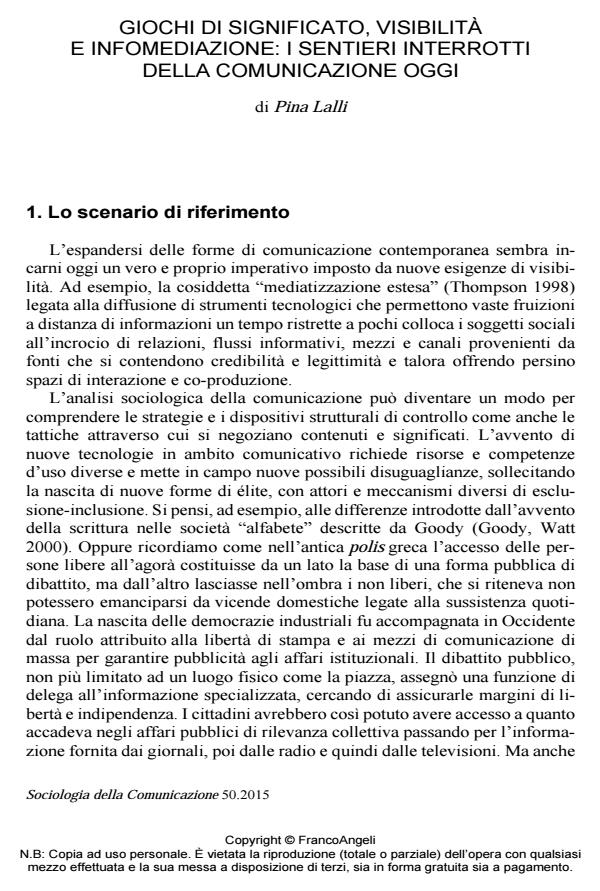Giochi di significato, visibilità e infomediazione: i sentieri interrotti della comunicazione oggi
Titolo Rivista SOCIOLOGIA DELLA COMUNICAZIONE
Autori/Curatori Pina Lalli
Anno di pubblicazione 2016 Fascicolo 2015/50
Lingua Italiano Numero pagine 11 P. 191-201 Dimensione file 221 KB
DOI 10.3280/SC2015-050018
Il DOI è il codice a barre della proprietà intellettuale: per saperne di più
clicca qui
Qui sotto puoi vedere in anteprima la prima pagina di questo articolo.
Se questo articolo ti interessa, lo puoi acquistare (e scaricare in formato pdf) seguendo le facili indicazioni per acquistare il download credit. Acquista Download Credits per scaricare questo Articolo in formato PDF

FrancoAngeli è membro della Publishers International Linking Association, Inc (PILA)associazione indipendente e non profit per facilitare (attraverso i servizi tecnologici implementati da CrossRef.org) l’accesso degli studiosi ai contenuti digitali nelle pubblicazioni professionali e scientifiche
The article proposes the notion of infomediation as an useful tool for empirical sociological research on the role that new social subjects play today in web communication. After a brief illustration of the contribution of the social sciences for the analysis of the effects and practices of media technologies, especially about the agenda building of the public sphere, the paper describes some examples of the infomediation phenomenon. It assumes from the literature the hypothesis that new technological oligarchic élites are constituting, with strong relationships with other types of élites. Finally, it shows some results and methodological suggestions of a few first empirical researches on the role of Google or Twitter for the newsmaking practices of information.
Pina Lalli, Giochi di significato, visibilità e infomediazione: i sentieri interrotti della comunicazione oggi in "SOCIOLOGIA DELLA COMUNICAZIONE " 50/2015, pp 191-201, DOI: 10.3280/SC2015-050018